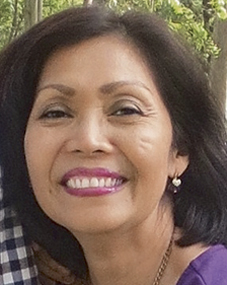The Philippine Economy — From being the “sick old man of Asia” to the “rising star in the Asia-Pacific”
As of this writing the 23rd Asia-Pacific Economic Cooperation (APEC) Summit 2015 which was held in Manila on November 18-19, 2015 with the theme “Building Inclusive Economies, Building a Better World: A Vision for an Asia-Pacific Community” just ended.
For Philippine President Benigno S. C. Aquino III who is barely seven months in his office before his term ends next year, the APEC hosting is an opportunity for the Philippines to showcase the results to the world as he trumpets the gains that his country achieved especially in terms of inclusive economic growth. But what is the real score of the country’s economy?
It was in 2010, the year Aquino was elected president of the Philippines when he set his administration’s growth agenda for the country – an agenda that involves all segments of society as invaluable participants in a growth that is holistic, creates jobs, sends children to school, puts food on the table, raises standards of living, protects the environment, fosters creativity and innovation, and levels the playing field. He would choose the Daang Matuwid (straight or corruption-free route) to be the road his administration would travel.
Improved credit ratings
Credit ratings are a measure of a country’s creditworthiness. It is bound to bring in more foreign capital and funds that countries with non-investment grade status are hard put to attract. On this score, the three major international credit rating agencies raised the ratings of Philippine government debt instruments to investment-grade since the Aquino administration has been steering economic and political reforms toward further easing the way business is done in the country.
The Japan Credit Rating Agency, for example, raised the country’s credit score to BBB+ from BBB, the highest the Philippines has ever received from any major inter-
national debt agency, and just one notch below the minimum in the “A” category sovereign rating.
Poverty alleviation
The World Bank’s PEU reported that poverty in the country is trending downwards since 2012. But poverty incidence increased between the first half of 2013 and the first half of 2014 attributed to Typhoon Yolanda that hit the country hard in November 2013, and artificially high rice prices due to importation lags, which are believed to have offset income growth of the poor. Incidence of poverty is projected to decrease further in 2017 using the new international poverty line of USD 1.90/day purchasing power parity (PPP), new 2011 PPP prices, and the above growth assumptions.
Even though poverty increased slightly, the overall downward trend still suggests that growth is becoming more inclusive. Apart from higher growth in recent years, the expansion of the conditional cash transfer (CCT) program in 2014 (Pantawid Pamilyang Pilipino Program 4Ps) is credited for raising the poor’s income. The Philippine government’s flagship Pantawid Pamilya program to fight poverty and to attain Millenium Development Goals which has benefited some 4.4 million households as of December 2014, is apparently reaching most of its key objectives.
The impacts found through a World Bank study are comparable to the levels of impact found in other CCT programs around the world at this stage of program maturity, particularly in terms of the program’s achievements in improved use of health services and school enrollment. The government remains confident that poverty will be further reduced at least by half this year until the end of the Aquino administration.
On track for MDGs
A government report to the UN claimed that the Philippines appears to be “on track” to meet its Millennium Development Goals (MDGs). However, the report admit-
ted that the country is “lagging behind” in six areas of the MDGs: Poverty and elementary education, in terms of completion rate; gender equality, as regards women’s political participation, and the fact that boys are at a disadvantage in terms of participation in elementary- and secondary- level education, maternal mortality, access to reproductive health care, and HIV/AIDS.
However, in a recent report by the World Economic Forum (WEF), the Philippines has been ranked the best country in Asia and seventh in the world in terms of gender equality. The Global Gender Gap Report 2015 placed the Philippines in the top 10 among 145 countries covered, given “major improvement” with “more female legislators, senior officials and managers, as well as professional and technical workers,” the Forum said.
Whats's next?
Can the Aquino administration therefore be said to have enabled the Philippine economy, at the end of six years in office, to be stronger and more competitive? Most of the indicators cited above based on governance, fiscal, economic and structural reforms would lead us to believe, yes, it can. On the political front, the president certi-
fied the passage of an anti-dynasty law as urgent considered to be the first such high level directive to reform the country’s political system. But most importantly, Con-
gress has deliberated on the Bangsamoro Basic Law (BBL), which is expected to help sustain that very elusive peace in the island of Mindanao in southern Philippines.
The remaining seven months of the Aquino Administration certainly present the best opportunity to define whatever “unfinished business” in the structural reform agen-
da on governance with respect to fighting corruption and increasing transparency, and further reforms in public finance, competition, property rights, and business regulations. When all these are done, the Philippines is definitely living up to its name as the “rising star in the Asia-Pacific”. Never again the ”sick old man of Asia”.
